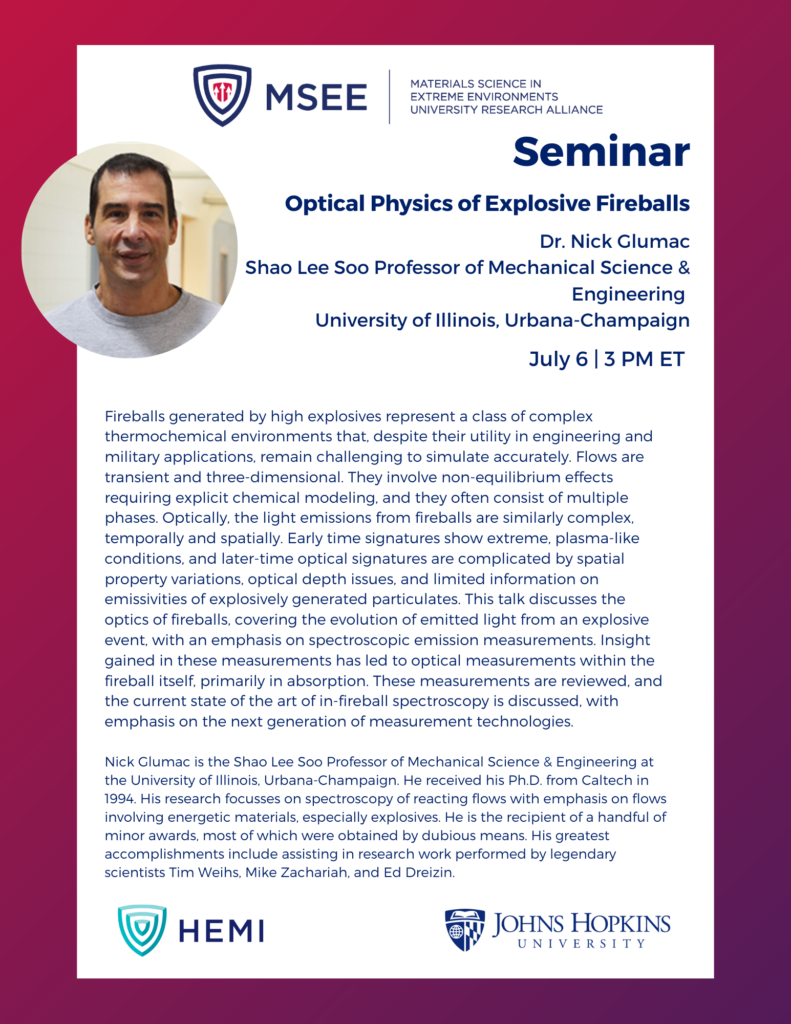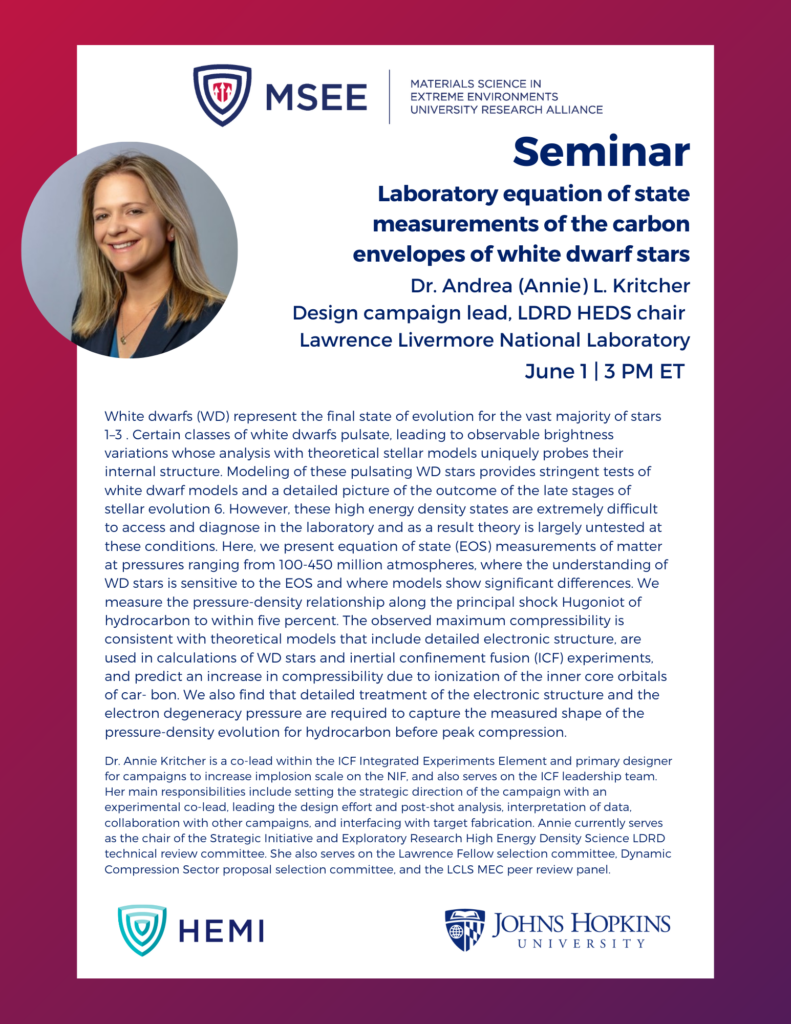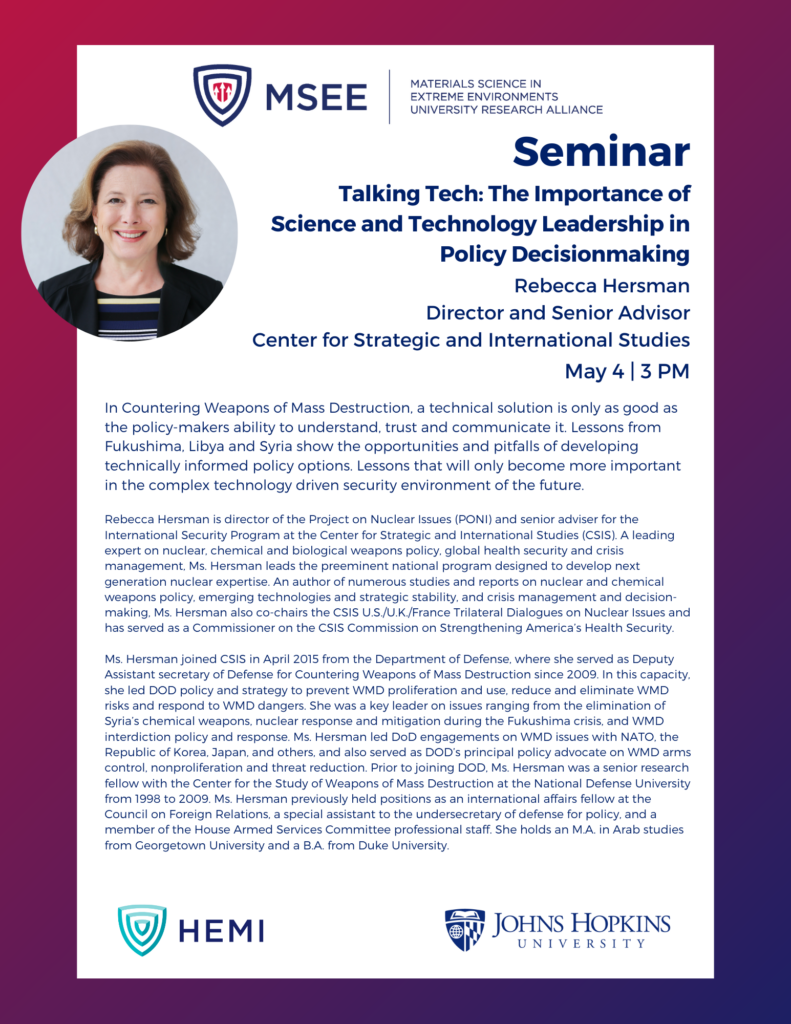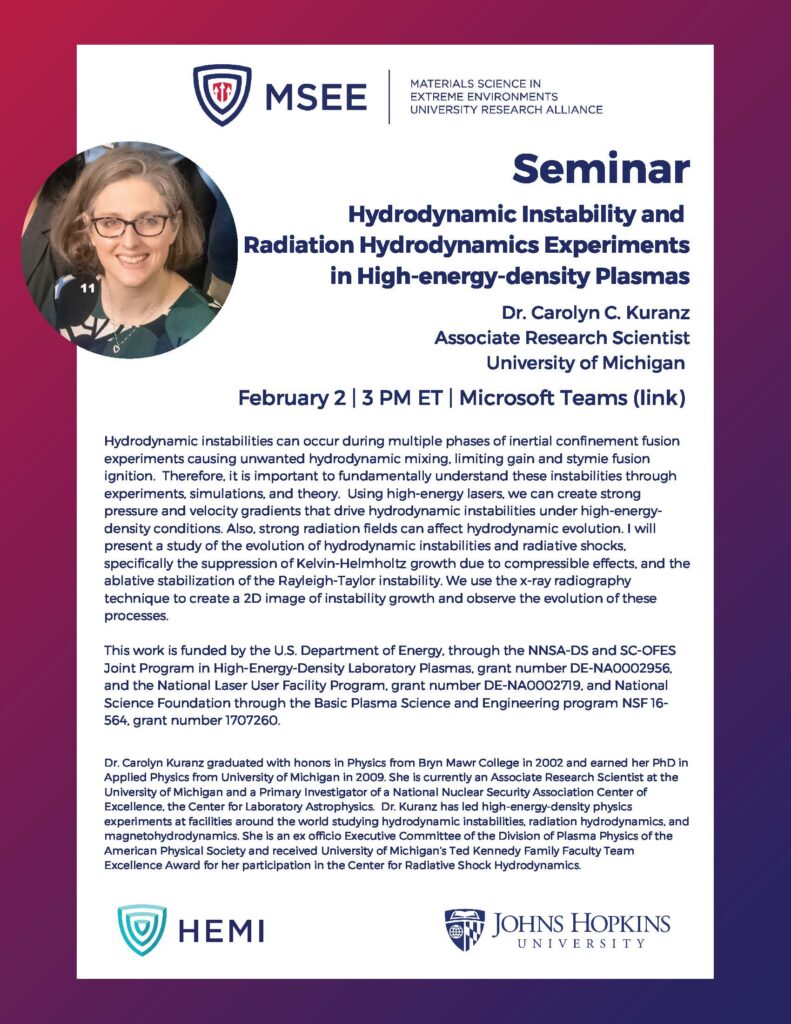Join us for a seminar with Prof. Ivan Oleynik, University of South Florida, titled “Carbon at Extremes: Discovery Science with Exascale Computers and Experiment.”
The seminar will begin at 3:00 PM ET on November 7, 2023.
Please contact Sarah Preis for connection information.
Bio: Ivan Oleynik is a professor at the Department of Physics, University of South Florida. His research focuses on studies of materials at extreme pressures and temperatures by advanced theory, simulations and experiment. He is also best known for design and prediction of properties of novel materials, and development of new methods for materials simulations at atomistic level. He leads several experimental teams to perform experiments at National Ignition Facility at Lawrence Livermore National Laboratory, Sandia’s Z pulsed power facility, Omega laser facility at Laboratory of Laser Energetics to realize groundbreaking predictions from his simulations. He also spearheads several computational campaigns at DOE’s exascale supercomputers, securing the largest computing allocations awarded by DOE’s ASCR Leadership Class Computing Challenge (ALCC) and the Innovative and Novel Computational Impact on Theory and Experiment (INCITE) programs. Ivan also led a team of computational scientists that earned a 2021 Gordon Bell Prize finalist nomination for record-breaking billion-atom simulations of carbon at extreme conditions and experimental time and length scales. He is a Fellow of the American Association for Advancement of Science, the American Physical Society, and the American Vacuum Society.










